In order for bees to benefit from a colorfully planted garden, you should choose the right plants. We reveal the top 10 bee-friendly perennials.
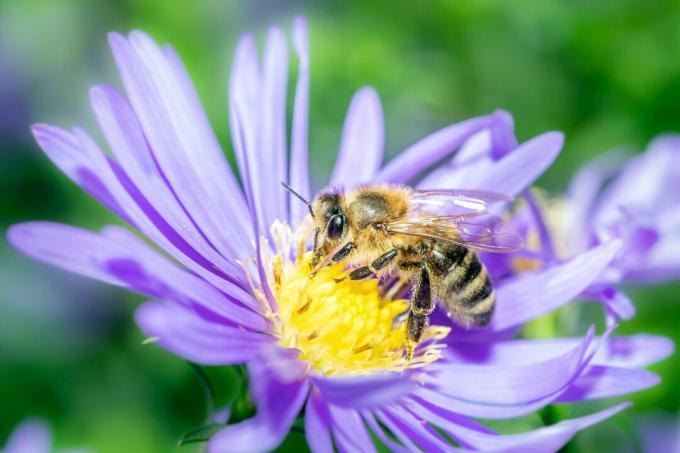
Need from spring to late autumn bees (Apidae) thousands of flowers that provide them with pollen and nectar. Long-flowering perennials are particularly easy to care for and productive, and they are also a lot of fun for the gardener. In this article we have summarized the top 10 most beautiful perennials for you. This list should also give you ideas on how to make your garden even more insect-friendly.
Perennials are perennial plants, which – unlike shrubs – die off above ground in winter and sprout again and again in spring. Accordingly, we can look forward to the pretty garden dwellers for a long time. Below we present ten wonderful flowering perennials for your own home garden.
contents
- 1. masterwort
- 2. yarrow
- 3. blanket flower
- 4. Verbena
- 5. water dost
- 6. catnip
- 7. sedum
- 8. aster
- 9. goldenrod
- 10. Indian nettle
1. masterwort
A beautiful representative of the umbelliferae (Apiaceae) is the Great Masterwort (Astrantia major). It is a forest and meadow perennial native to Central Europe and occurs primarily at higher altitudes of up to 2000 meters. The flowers on long flower stalks at a height of about 70 centimeters offer a very special sight. The small flower umbels are each surrounded by a star-shaped wreath of colored bracts. The masterwort likes to stand on calcareous, moist loamy soil with a good supply of nutrients. It doesn't need a lot of sun, but it tolerates it if the water supply is right. It is considered a true magnet for bumblebees, bees and other insects.

2. yarrow
Those belonging to the daisy family (Asteraceae) belonging yarrow (Achillea sp.) are available in a wide variety of colors and growth heights. Depending on Yarrow Art the plant with the filigree pinnate leaves reaches a height of 10 to 150 centimeters. The many small flowers are arranged in umbels and beguile many hard-working pollinators with their very own scent from June to autumn. The outer petals are rich pink through crimson to fiery orange, yellow and white. Yarrow prefers light, well-drained soil in full sun. In order to be able to enjoy the flowers every year, the perennial should be divided every few years and thus rejuvenated.

3. blanket flower
The large-flowered blanket flower (Gaillardia x grandiflora) is a hybrid of a herbaceous Gaillardia grandiflora and the annual Gaillardia pulchella. The blanket flower forms large basket flowers, which are either yellow or dark in the middle. The outer halo of ray florets is either monochromatic yellow to dark red or attractively colored in two colors. The flowering period lasts from July to October and thus provides busy pollinators with food for an extremely long time. As a steppe plant, it is sensitive to waterlogging and likes to stand on permeable and light soil.
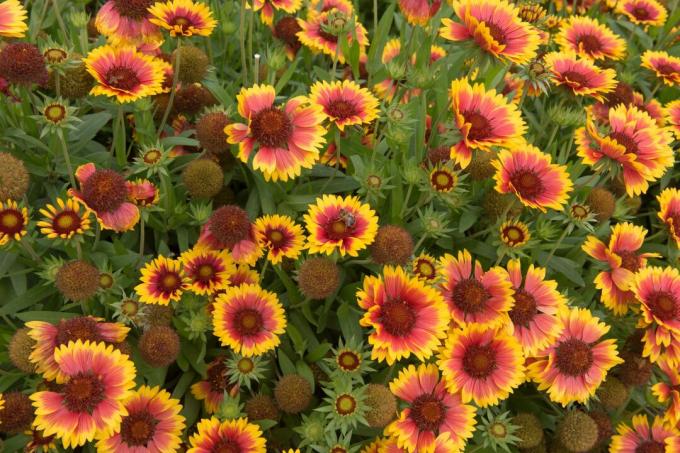
4. Verbena
The Verbena (Verbena officinalis) delights every year with a splendor of delicate violet flowers, which bees in particular find irresistible. It is closely related to the wonderfully fragrant lemon verbena (Lippia citriodora). As a medicinal plant, it is used in alternative medicine for headaches and depression. Nowadays it can be found in many gardens as a flowering perennial, where it can reach a height of up to 80 centimeters in favorable locations. Verbena can produce long-stemmed flowers again and again from June to October and is therefore one of the long-flowering perennials. Verbena prefers to grow in nutrient-poor, rather dry and sunny to partially shaded locations.
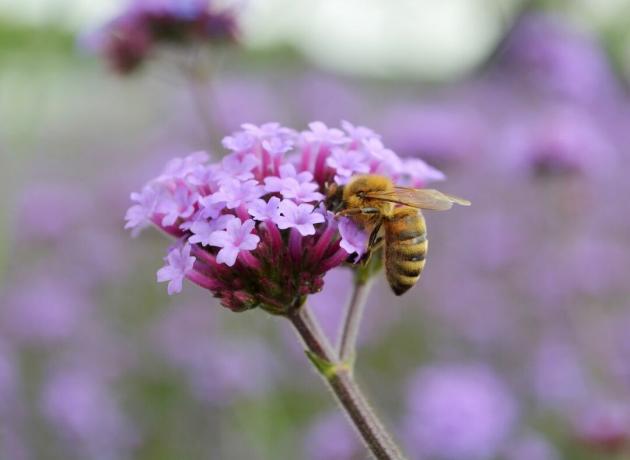
5. water dost
The water drop (eupatorium sp.) belongs to the daisy family (Asteraceae) and has long been known as a medicinal plant to accelerate wound healing and as a stimulating herb. As its name suggests, it feels particularly at home near ponds and bodies of water. Depending on the variety, it reaches a height of about 80 centimeters to over two meters. From June to September, the pretty white, purple or wine-red pseudo umbels provide plenty of food. Unlike many other bee perennials, the water daisy prefers a partially shaded, moist location. In early spring, the nutrient-hungry perennial is also happy about a compost addition.
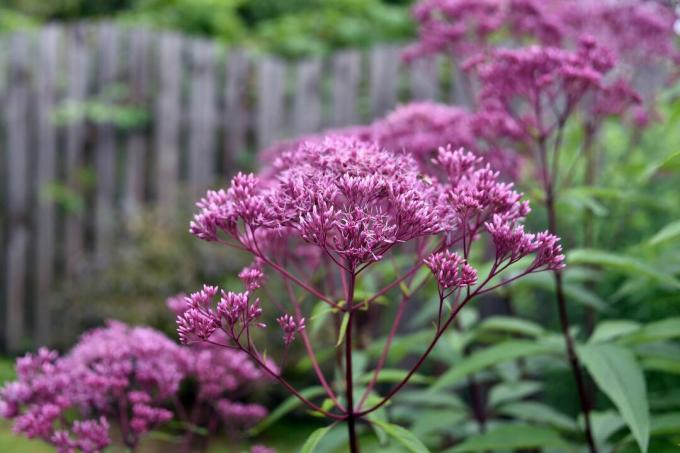
6. catnip
The fragrant one that is so popular with our cuddly tigers catnip (Nepeta cataria) also offers bees nectar and pollen in spring from April. The delicate blue, violet or white flowering perennial belongs to the thyme (Thymus vulgaris) and rosemary (Rosmarinus officinalis) to the mints (Lamiaceae). Naturally, the up to 1.40 meter high perennial is swarmed by many insects. Catnip is very undemanding and grows best on poor, well-drained soil in sunny locations. After the first flowering, you can cut them back to encourage a second flowering in the summer.
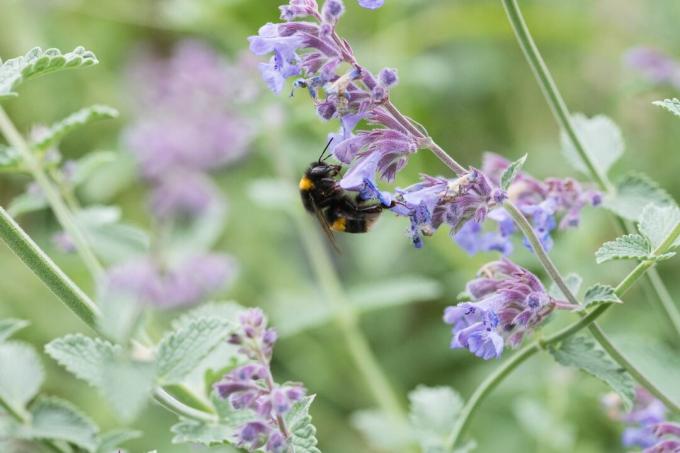
7. sedum
the sedum (Sedum spectacular) has thick, fleshy leaves and forms large inflorescences with many small individual flowers. All colors are represented, from white to sunny yellow to deep red. Depending on the species, the sedum reaches a height of up to 80 centimeters. The hardy perennial is a popular one from June to September bee pasture. Well-drained and nutrient-rich soil is ideal for planting sedum hens and since they always carries its water supply with it in its thick leaves, even drought doesn't bother it much the end.

8. aster
The group of asters (aster) is the namesake of the daisy family of plants (Asteraceae). The name means "star", which alludes to the radially arranged petals. The asters include above all the smooth-leaf aster (Symphyotrichum novibelgii) and the borage aster (Symphyotrichum novi-angliae) and the myrtle aster (Symphyotrichum ericoides) and the dwarf cushion aster (Symphyotrichum dumosus). All these perennials are popular with butterflies and bees. From July until late autumn, the asters, which can grow up to three meters high, are very busy every day. In terms of colour, asters cover all nuances from dark violet to pink, but also red and orange to white and thus wonderfully complement every bed.
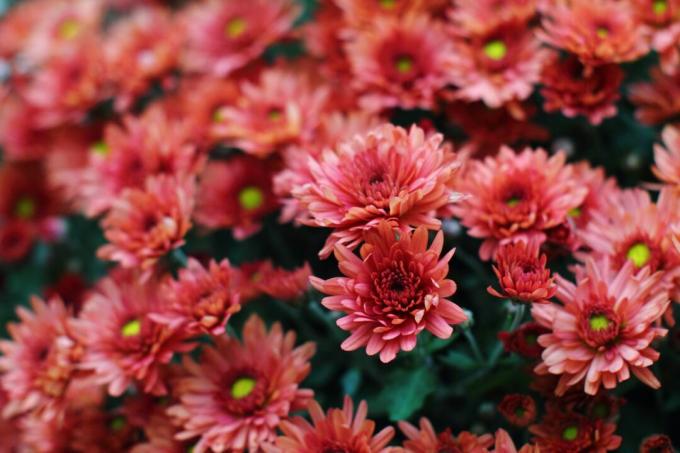
9. goldenrod
goldenrod (Solidago canadensis) are real insect magnets, during the flowering period from June to September there is an audible buzz around the tall perennials. This golden yellow prairie perennial from North America forms long canes on which many small yellow individual flowers are located. In the wild, it spreads widely through self-seeding and has already conquered the whole of Europe and large parts of Asia. Therefore, faded seeds should be cut off immediately and composted. Goldenrods prefer medium to heavy, chalky soil in full sun. The goldenrod is also extremely undemanding when it comes to nutrients and water. It is used as a medicinal herb in homeopathy. It has a positive effect on kidney diseases.

10. Indian nettle
The up to 150 centimeters large forest Indian nettle (Monarda didyma) is also called bee balm, although its flowers are bright red. From June to August it is eagerly visited by various bees and butterflies. This perennial has a fresh, fruity scent of lemon and its leaves can therefore also be prepared as a tea. It originally comes from North America and loves bright and warm locations with a good water supply. In the spring it shoots up rapidly and is therefore happy about annual fertilizer applications.
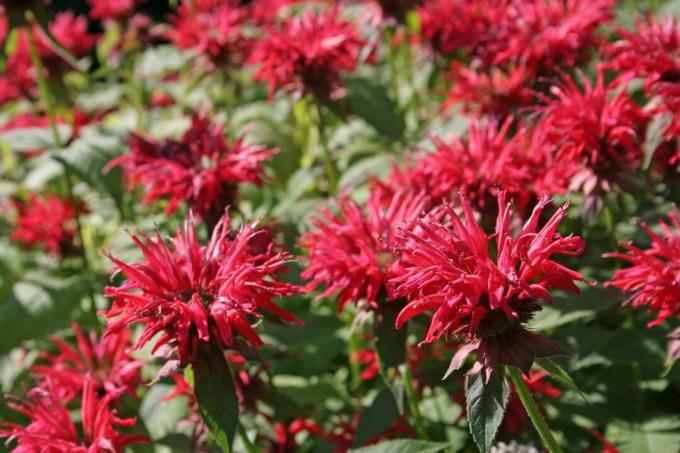
Tip: So that you don't have to look for different plants for your bee-friendly garden, there are also insect-friendly seed mixtures. the Plantura bee pasture for example, supplies the bees and bumblebees in your garden with food for months.
If you not only bees, but also our domestic butterflies want to do something good, take a look at our special article on the top 10 butterfly friendly plants over or the 15 most beautiful bee bushes past.



